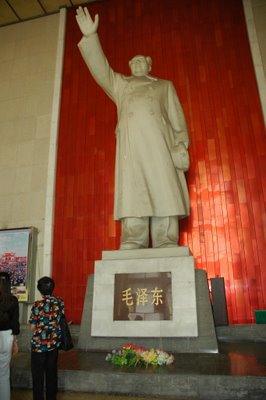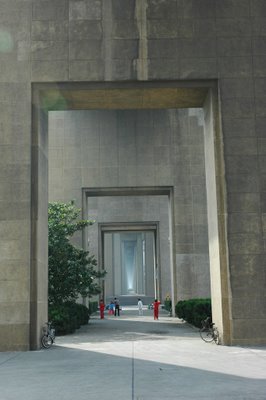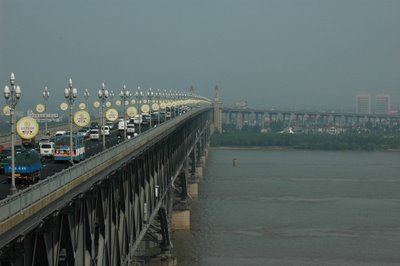The Nanjing Yangtze River Bridge was the first stop on Day 4. The bridge was the pride of the Nanjing people because it was the first double-decker and double-track highway and railway bride designed and constructed by the Chinese with no foreigner's assistance. The Nanjing Yangtze Bridge is the first bridge to be built across the Yangtze River was completed in 1968. It is 6,722 meters long and has a span of 160 meters.
At the Nanjing Yangtze River Bridge visitors' centre, there stood a large statue of
Mao Tse-tung. There were also pictures on how the bridge was built and the final celebration when the bridge was completed in 1968. On the top level of the centre, we were able to view the span of the bridge over the mighty Yangtze River.
 The giant statue of Mao Tze-tung at the Visitors Centre
The giant statue of Mao Tze-tung at the Visitors Centre

 The pillars of the bridge forms a good geometrical view
The pillars of the bridge forms a good geometrical view
 The view of the bridge spanning across the Yangtze River
The view of the bridge spanning across the Yangtze RiverThere was also an art centre at where painting were done a the reverse of a crystal ball or a bottle. Since it was Sunday, the actual artist who drew the magnificent art was present to endorse and take picture of the items that were bought there.






No comments:
Post a Comment